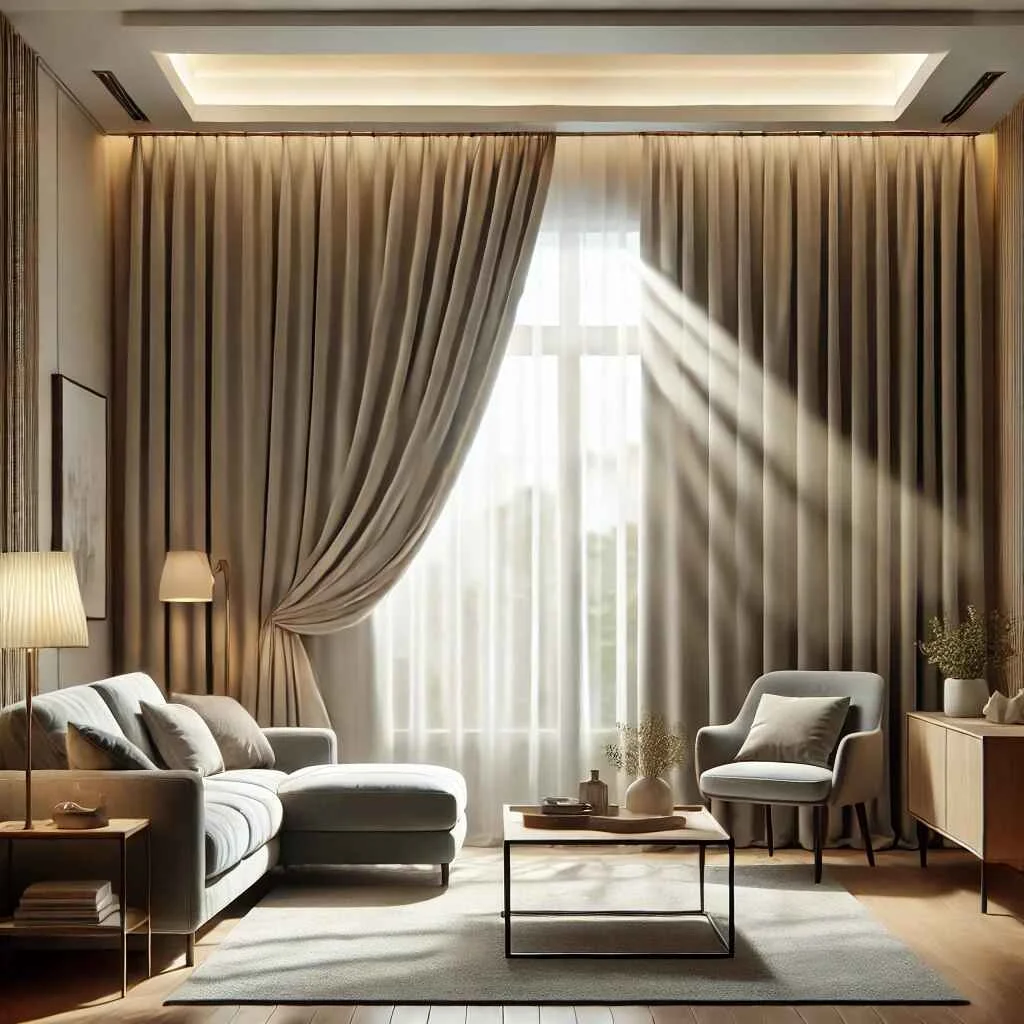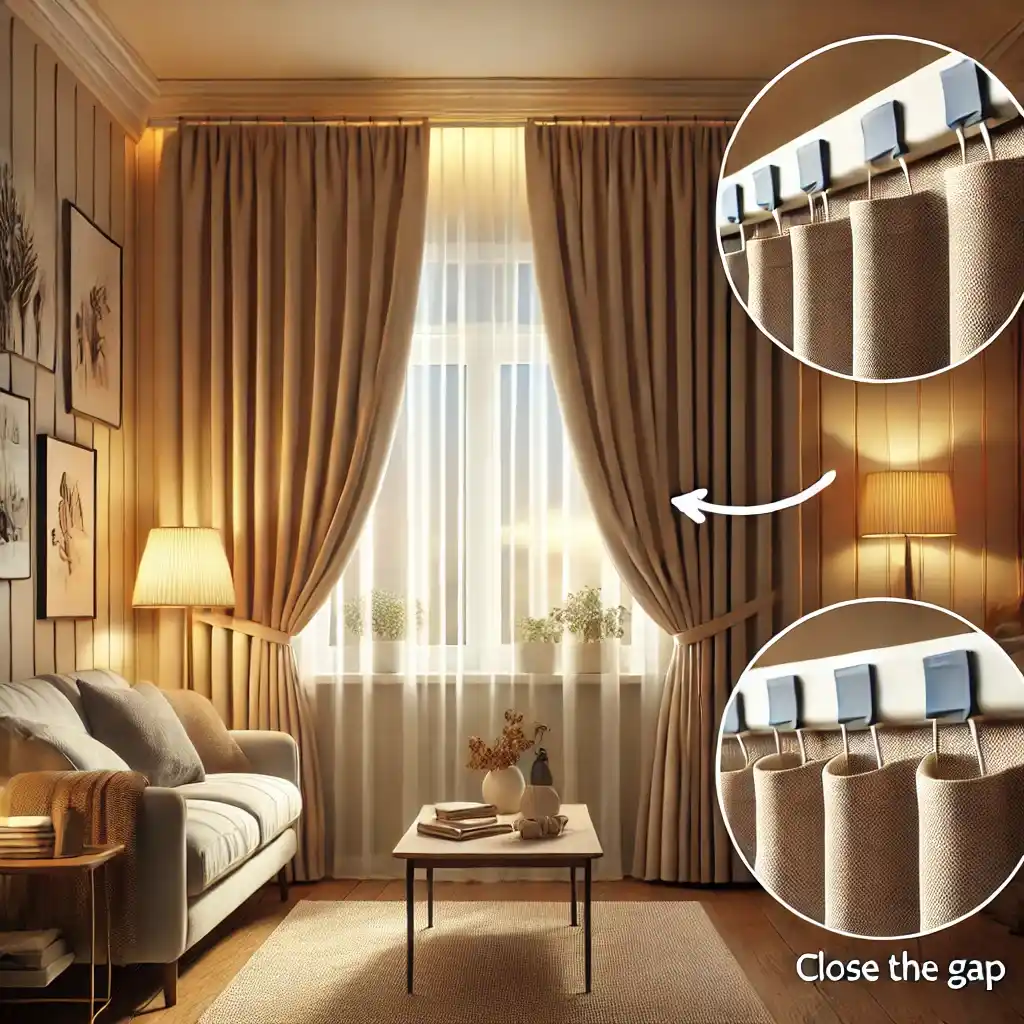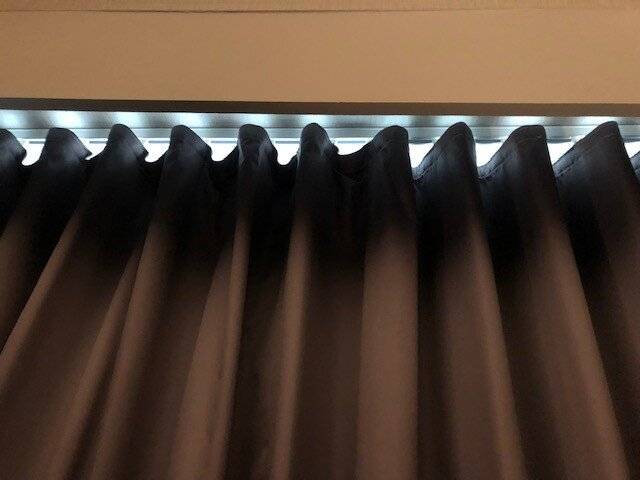Blocking light from the top of curtains is a common challenge faced by many homeowners who value their privacy and seek peaceful darkness for restful sleep. When sunlight or streetlights sneak in from the upper part of your curtains, it can disrupt your comfort and overall room ambiance. Fortunately, there are various effective solutions to this issue, and in this article, we will explore them in detail.
From selecting the right curtain styles and materials to utilizing creative techniques like valances and cornices, we will provide you with a comprehensive guide on how to keep that unwanted light at bay.
So, as I mentioned above how to block light from the top of curtains? you need to know. By the end of this article, you’ll be equipped with the knowledge and expertise to transform your living space into a haven of darkness and tranquility, allowing you to enjoy privacy, quality sleep, and the perfect ambiance.
So, keeping in mind all of your needs here I come up with a detailed guide about it.
How do you block light from the side of a window?
Assess the Light Source:
First, identify the source of the light you want to block from the sides of the window. Is it natural light during the day or external light sources at night?
Measure the Gap:
Measure the gap between the window frame and the wall on each side. Note these measurements down, as they will guide your choice of materials and methods.
Choose the Right Solution:
Depending on the gap size and your aesthetic preferences, you can choose from several solutions. Some common options include:
Curtain Extensions:
Attach curtain extensions to your existing curtains. These are fabric panels that hang on either side of the window, effectively blocking light.
Side Tracks:
Install side tracks, also known as light-blocking strips or channels, on the sides of the window frame. These can be fixed in place and prevent light from seeping through.
Curtain Rod Extensions:
Extend your curtain rods wider than the window frame to ensure the curtains overlap the sides effectively.
Install the Chosen Solution:
Follow the manufacturer’s instructions to install the selected solution. Ensure it’s secure and covers the entire gap on each side.
Hang Light-Blocking Curtains:
To maximize light blocking, consider using light-blocking curtains in combination with your chosen solution. These curtains are made of materials designed to keep out light effectively.
Secret Points to Enhance Light Blocking:
Seal Gaps and Cracks:
Check for any gaps or cracks around the window frame and wall. Seal them with caulk or weatherstripping to prevent light from sneaking in.
Use Magnetic Strips:
Magnetic light-blocking strips can be attached to the sides of the window frame, providing a secure and flexible solution.
Custom Window Treatments:
Consider custom-made solutions tailored to your window’s specific measurements for a perfect light-blocking fit.
Velcro Attachments:
Use Velcro strips to attach fabric panels or light-blocking material to the sides of the window. This allows for easy removal and maintenance.
Consider Shutters or Blinds:
For a more permanent solution, install shutters or blinds that can cover the sides of the window effectively. These can be adjusted to block light as needed.
By following this step-by-step guide and considering the secret points, you can effectively block light from the sides of your window, creating a more private and light-controlled living space.

How to block light from the top of the curtains?
To block light from the top of curtains, you can use a variety of techniques and accessories. Here are some methods you can consider:
Curtain Rod Placement:
Mount your curtain rod as close to the ceiling as possible. This prevents light from seeping in between the curtain rod and the top of the curtains. Extend the curtain rod a few inches beyond the window frame on either side to minimize light gaps on the sides.
Curtain Clips or Rings:
Use curtain clips or rings with clips to attach your curtains to the rod. These can help hold the curtains tightly against the wall or ceiling, minimizing light gaps.
Valances or Cornices:
Install a valance or cornice above your curtains. These are decorative panels that cover the top of the curtains and prevent light from entering.
Blackout Liners:
Add blackout liners to your existing curtains. These are special liners that attach to the back of your curtains and provide an extra layer of light-blocking material.
Curtain Tracks:
Consider using curtain tracks or rails instead of rods. These can be mounted on the ceiling to completely block light from the top.
Velcro Strips:
Attach self-adhesive Velcro strips to the top of the curtains and the wall or ceiling. This creates a secure seal and prevents light from entering.
Tension Rods:
Install tension rods above your curtains and use them to hold an additional piece of blackout fabric or a blackout roller shade.
Hooks and Tiebacks:
Use hooks and tiebacks to hold the curtains against the wall or ceiling when you want to block out light. Release them when you want to let light in.
Reposition the Curtains:
Adjust the position of the curtains so that they overlap and cover any gaps at the top.
Use Heavier Curtains:
Select curtains that are made of heavier materials, as they are more effective at blocking light.
Remember that the effectiveness of these methods may vary depending on the type of curtains you have and the amount of light you’re trying to block. You can also combine several of these techniques to achieve the level of light-blocking you desire.

How To Close A Gap Between Curtains And Walls:
To close the gap between curtains and walls, follow these steps:
First, make sure your curtain rod is installed as close to the wall as possible. Adjust its position if needed.
Use curtain hooks or rings to attach the curtains to the rod. This allows you to adjust the curtain’s position and close the gap.
Consider using curtain tiebacks. They hold the curtains against the wall when they’re open, minimizing the gap.
Hang a valance above the curtains. This covers the gap at the top and adds a decorative touch.
If your curtains are still not wide enough, you can sew or attach extra fabric to make them wider and cover the gap.
To prevent drafts, apply magnetic or adhesive tape along the sides of the window frame. This will create a tight seal and reduce the gap.
Additional tip: For an elegant solution, use double curtain rods with sheer or decorative curtains on the inner rod. This not only reduces the gap but also adds a layered and stylish look to your windows.

Using Magnetic Tape To Block Light From The Top Of Curtains:
Using magnetic tape to block light from the top of curtains is a practical and relatively easy solution. Here’s how you can do it:

Materials Needed:
Magnetic tape (available at most hardware or craft stores)
Scissors:
Curtain fabric or a piece of blackout fabric
Measuring tape:
A flat surface to work on
Steps:

Measure the Space:
Start by measuring the length of the top of your curtains to determine the length of magnetic tape needed. You may need multiple pieces if your curtains are wide.
Cut Magnetic Tape:
Use scissors to cut the magnetic tape into the required lengths. Make sure it’s slightly shorter than the width of your curtains, so it doesn’t show from the front.
Attach Magnetic Tape to Curtains:
Place the magnetic tape along the top edge of your curtains. Ensure it’s centered and secure it in place. If your curtains have a hem, you can tuck the magnetic tape into the hem to conceal it.
Attach Magnetic Tape to Window Frame or Wall:
Measure the corresponding location on the window frame or wall where you want to attach the curtains to block light. Cut another piece of magnetic tape to fit this location.
Secure the Curtains:
Press the magnetic tape on the curtains against the magnetic tape on the window frame or wall. They will attract each other and hold the curtains in place.
Test for Light Leakage:
Stand back and check for any light leakage around the edges of the curtains. Adjust the placement of the magnetic tape as needed to ensure a tight seal.
Additional Curtain Weight (Optional):
If your curtains are particularly lightweight or still allow some light through, you can attach a strip of blackout fabric to the top of the curtains using magnetic tape. This extra layer will enhance light-blocking.
Adjustability:
Keep in mind that using magnetic tape may not offer the same adjustability as other curtain-hanging methods. Once the magnetic tape is attached, it may be more challenging to open and close the curtains. However, it’s an effective method for creating a fixed light-blocking solution.
Magnetic tape provides a secure way to block light from the top of curtains without permanent alterations to your curtains or window frame. It’s especially useful if you want a temporary or non-invasive solution for light control.

Using An Extra Curtain Panel To Block Light From the Top Of the Curtains:
Using an extra curtain panel to block light from the top of your existing curtains can be an effective way to enhance light-blocking and create a more complete blackout effect. Here’s how you can do it:
Materials Needed:
An extra curtain panel (preferably a blackout curtain or a dark-colored, heavy fabric)
Curtain rod or tension rod
Curtain clips or hooks (if not already included with the extra curtain panel)
Measuring tape
Scissors (if necessary)
Steps:
Select the Extra Curtain Panel:
Choose a curtain panel that matches the length and width of your existing curtains. It should preferably be a blackout curtain or a dark-colored, heavy fabric to effectively block light.
Prepare the Curtain Rod:
If you don’t already have a secondary curtain rod in place, install one above your existing curtains. Ensure it is level and securely mounted. You can use a traditional curtain rod or a tension rod depending on your preference and the weight of the curtain.
Attach Curtain Clips or Hooks:
If the extra curtain panel doesn’t come with clips or hooks, attach them to the top edge of the curtain panel. You can space them evenly to distribute the weight of the panel.
Hang the Extra Curtain Panel:
Use the curtain clips or hooks to hang the extra curtain panel on the secondary curtain rod. Position it as close to the ceiling as possible to block light from the top. If the curtain is too long, trim it to the desired length using scissors.
Overlap with Existing Curtains:
Pull the extra curtain panel to overlap with your existing curtains. This creates an extra layer of light-blocking material at the top.
Secure the Curtains:
Use tiebacks or curtain holdbacks to keep the extra curtain panel and your existing curtains in place when you want to block light. These can be easily released to let light in.
Test for Light Leakage:
Step back and check for any light leakage around the edges of the curtains. Adjust the positioning of the curtains and overlap if necessary to achieve a tight seal.
Using an extra curtain panel to block light from the top of your curtains is a versatile and effective method for darkening a room. It provides an additional layer of light-blocking material and can be adjusted to suit your light control needs.
Conclusion:
In conclusion, blocking light from the top of your curtains is a simple yet effective way to create a darker and more comfortable living space. By using methods like magnetic tape or adding an extra curtain panel, you can keep unwanted sunlight at bay and enjoy a more relaxing atmosphere. These solutions are easy to implement and can significantly enhance your room’s light control.
Whether you prefer complete darkness for a good night’s sleep or just a bit of shade for added comfort, these techniques can help you achieve the desired level of darkness. So, go ahead and try out these tips to make your space more inviting and perfect for any time of day or night.
Frequently Asked Questions (FAQs):
Q: Can I make my blackout curtains?
A: Yes, you can make your blackout curtains using blackout fabric or by adding a blackout lining to existing curtains. This DIY approach allows for a custom fit.
Q: What are the benefits of light-blocking curtains?
A: Light-blocking curtains provide better sleep quality, improved energy efficiency, and protection of your furniture and décor from sun damage.
Q: How do I clean blackout curtains?
A: Most blackout curtains are machine washable. Be sure to check the care instructions, but generally, a gentle cycle with cold water is recommended.
Q: Are there alternatives to curtains for blocking light at the top?
A: Yes, alternatives include blinds, shades, and window films. Each has its advantages, so consider your needs and preferences.
Q: Can I combine multiple methods for better light control?
A: Absolutely. Mixing and matching techniques such as valances, pelmets, and curtains can provide the ultimate light-blocking solution.
Q: Are blackout curtains suitable for all room types?
A: Yes, blackout curtains are versatile and can be used in bedrooms, living rooms, home theaters, and any space where light control is essential
- IF YOU ARE INTERESTING TO KNOW ABOUT 5 Hacks For Curtain That Are Too Long CLICK HERE



1 thought on “How To Block Light From The Top Of Curtains?”